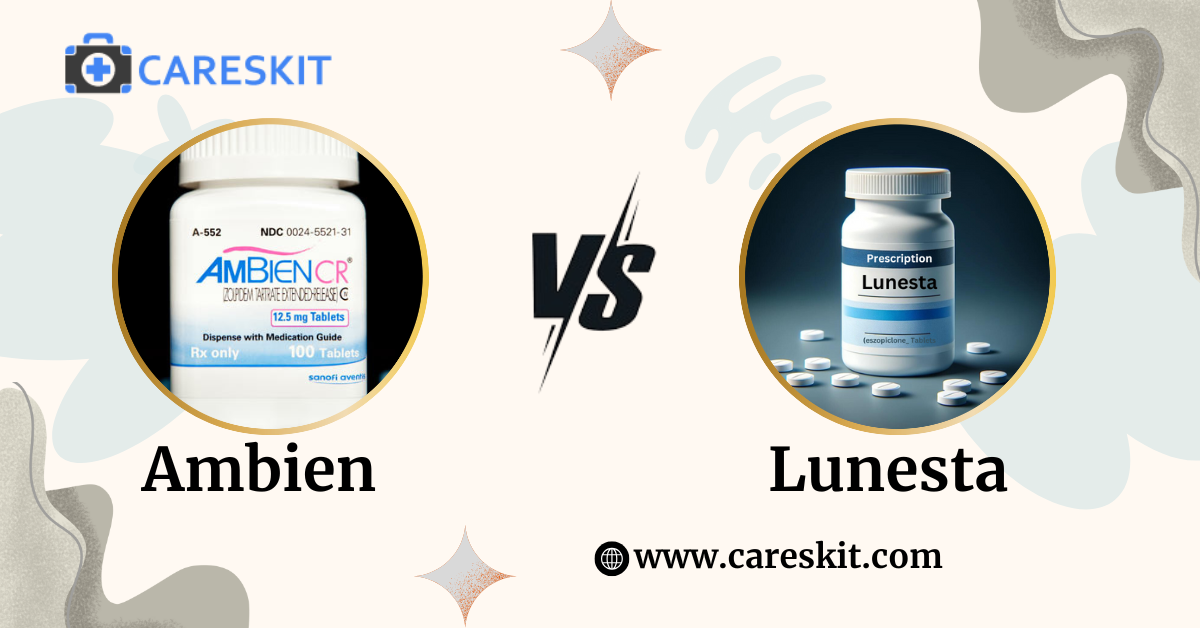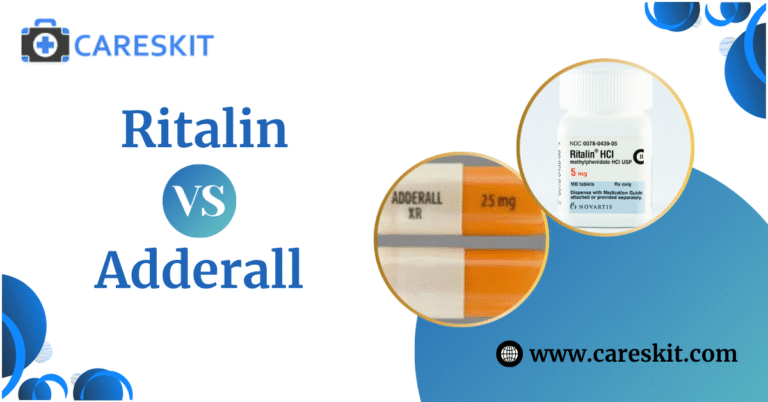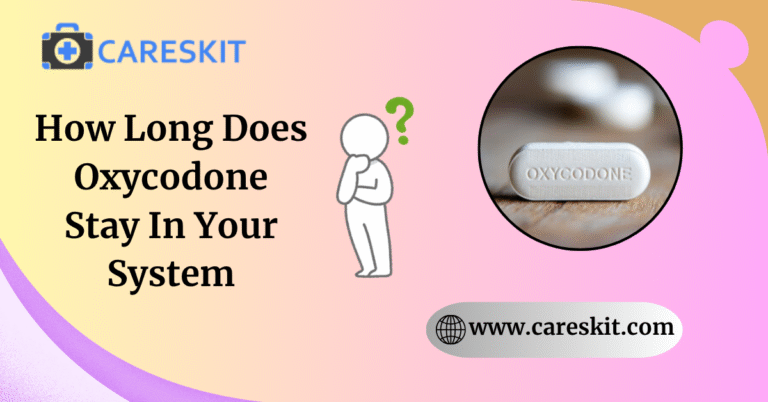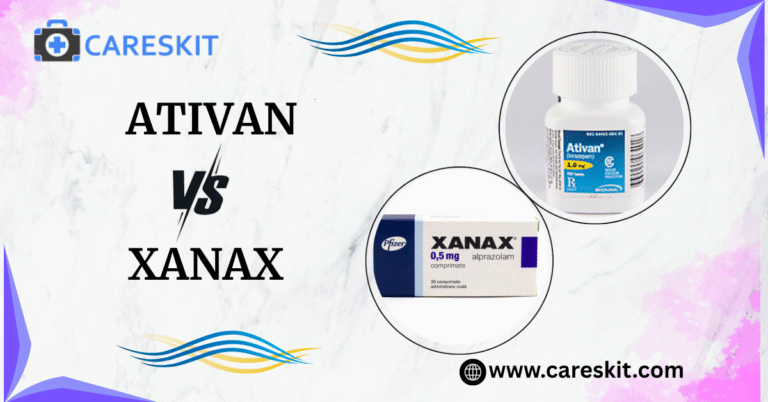Ambien vs Lunesta: A Clinical Comparison for Insomnia
If you are working with a prescription sleep medicine, Ambien and Lunesta are two of the most commonly used drugs for insomnia(sleeping difficulty). Both drugs fall under the category of the non-benzodiazepine sedative-hypnotic drug class, and it is intended to control sleeping problems and reduce sleep-related risk. Although both drugs are Schedule IV controlled substances based on the potential for misuse, they are generally regarded as safe for short-term use with medical supervision.
In this blog, we compare Ambien vs. Lunesta, and the correct choice may depend on whether the primary issue is falling asleep quickly or maintaining sleep throughout the night. And also we discuss some key factors like various dosages, mechanism of action, Lunesta vs Ambien which is stronger, are Ambien and Lunesta similar, and difference between both of them.
Understanding Ambien and Lunesta
Ambien (Zolpidem) and Lunesta(Eszopiclone) are two widely prescribed drugs that are used to treat common sleeping disorders that affect millions of adults. Both drugs are designed to treat sleep difficulties and minimize the dependency risks.
What is Ambien?
Ambien is a sleeping medication used for the treatment of insomnia or long-time sleepiness. This drug is available in the form of 5 mg and 10 mg tablets and it functions by slowing down the chemicals present in the brain to help individuals who suffer from insomnia. These medications are also available as a regular oral tablet or extended release versions that are highly effective for long-term sleep disorder.
What is Lunesta?
Lunesta is approved for both onset and maintenance, helping patients stay asleep throughout the night. It works by interacting with GABA receptors in the brain to produce an effect of restful sleep. It has been approved for both long-term and short-term pain conditions used under medical supervision, and it has a longer half-life (around 6 hours), making it more effective for those who have trouble staying asleep, but may cause next-day drowsiness in some users.
Alternatives
If both medications are not effective to relieve long-term sleep problems then most of the healthcare providers suggest some alternatives that are producing high effects rather than Ambien and Lunesta. Some alternatives are:
Difference Between Lunesta and Ambien
Lunesta and Ambien are two of the most prescribed medications classified as non-benzodiazepine hypnotics and also known as “Z-drugs”. While both share a similar working principle but they differ in how long they work and what types of insomnia they target.
Some key differences are shown below:
- Ambien is highly prescribed for short-term treatment, whereas Lunesta is FDA-approved for both short-term and long-term sleep treatment.
- Both medications share some similar side effects but Lunesta causes more due to misuse or overdose where Ambine causes both common and serious side effects.
- Lunesta is available in the tablet form of 1mg, 2 mg and 3 mg while Ambien is available in only 5 mg and 10 mg tablets.
Is Ambien effective than Lunesta?
The decision between Ambien and Lunesta comes after a consultation with a healthcare professional. Lunesta is typically chosen for long-term treatment for individuals who experience difficulty sleeping through the night, and Ambien has a more rapid onset and reduced half-life, and is mainly prescribed for individuals who have difficulty falling asleep. Both drugs have equal risks, such as dependence, drowsiness the day after taking, and complex sleep behavior.
Lunesta vs Ambien: Which is stronger
Both drugs work to treat insomnia, but of the two, Lunesta is stronger than Ambien when it comes to keeping a person asleep all night.
As far as sedative potency is concerned, Lunesta induces next-day sleepiness, particularly at higher doses, which is an indicator of its extended effect. Lunesta’s half-life is up to 6 hours longer than Ambien’s half-life up to 2-3 hours. That is, Lunesta remains active in the system for a prolonged period and makes it more suitable for individuals who have problems to fall asleep during the entire night.
Ambien vs Lunesta Side Effects
Ambien and Lunesta are both FDA-approved drugs to treat insomnia though effective, they both have possible side effects, some of which are common, while some are severe. Here it is presented how the two drugs have various side effects.
Common side effects shared by both medications are:
- Sleepwalking
- Memory problems
- Dry mouth
- Diarrhea
- Nausea
- Headache
- Dizziness
- Daytime drowsiness
Severe side effects shared by both medications are:
- Sleep-related complex behaviors
- Next-day impaired alertness
- Severe daytime sedation
- Rare hallucinations
- Mood changes
Always take these medications only when you can get a full 7 to 8 hours of sleep, and never mix them with alcohol and opioids. Both medications carry an FDA Black Box Warning for their complex sleep behaviours.
Ambien vs Lunesta: Drug Interactions
Ambien and Lunesta both are Z-drugs prescribed for the treatment of long-term sleepiness. Both medications share a similar drug interaction profile after taking these medications with other substances. Some of these are listed:
- Alcohol
- Oxycodone
- Hydrocodone
- Valium
- Ativan
- Antipsychotics
- Antihistamines
- Bupropion
- SSRIs
FAQs
Is it safe to take both medications at the same time?
Both of these medications are prescribed separately by a healthcare provider and for short-term use only. Taking these medications together can produce side effects or even death. Before you take any sleeping medications first consult your doctor to check if it is safe or not for your conditions.
How do Ambien and Lunesta compare in effectiveness?
Ambien and Lunesta are both effective treatments for insomnia, but may be effective differently based on the quality of sleep. Clinically demonstrated to both improve overall sleep quality, but Lunesta allows for more consistent sleep duration, whereas Ambien provides for the immediate onset of sleep.
How long does both medications stay in the system?
Ambien and Lunesta are best for long-term sleep treatment but they differ slightly in their mechanism, and how long they stay in the system. Ambien has a shorter half-life of up to 2 to 3 hours to produce quick effects while Lunesta has a longer half-life of about 6 hours to stay longer in the body.
Conclusion
Lunesta and Ambien are both FDA-approved for quick relief from insomnia. These are highly effective for long-term sleeping disorders and they do similar work in the brain to reduce sleepiness but they have different formulations. A patient can use Ambien or Lunesta according to health conditions to treat sleep disorders as both have formed similar effects. After taking these medications if you are facing any side effects it is advisable to consult a certified healthcare provider for your better health.






